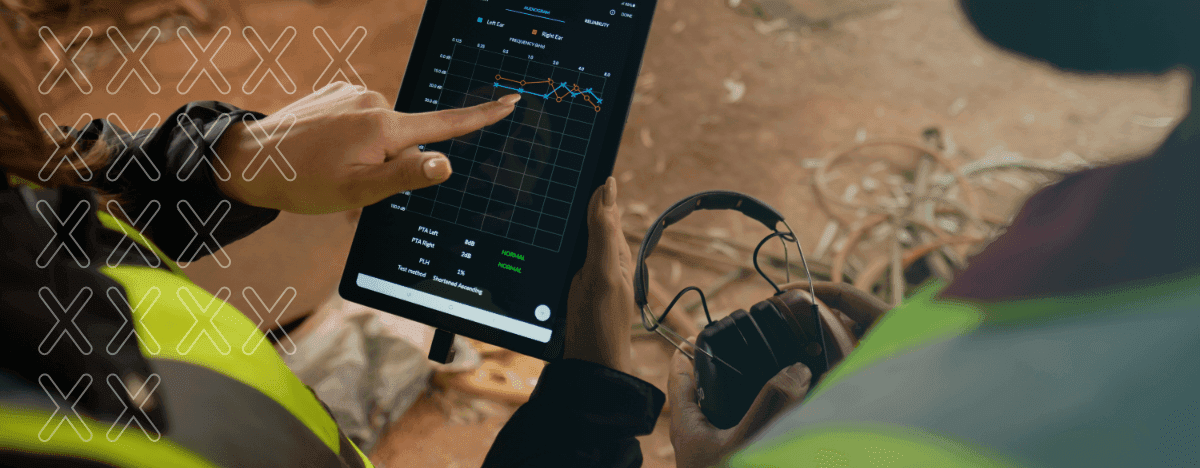
Occupational hearing test reasons to move away from traditional to digital audiometry
Search for articles by category
Continuous exposure to excessive noise levels in workers is a major cause of noise-induced hearing loss (NIHL) globally and can significantly reduce quality of life and economic productivity, accounting for approximately 4 million disability-adjusted life years worldwide. The lack of periodic hearing screening of industrial workers, a high-risk group, also delays the detection of NIHL and represents a neglected public health concern worldwide.
Hearing conservation programs in the workplace are designed to reduce and possibly eliminate the development of hearing loss in the workplace, as a result of exposure to excessive loud noise levels and ototoxic chemicals. The priority of controls is a systematic approach to limiting workplace hazards that gives priority to the most effective measures.
Traditionally, hearing conservation programmes have been implemented using conventional audiometers. As a result there have been many challenges encountered with these screening programs, such as:
- Failure to define in measurable terms what the screening is attempting to identify
- Failure to maintain confidentiality
- Failure to confine screening to tests having a high degree of validity or accuracy
- Errors in tests being administered by poorly trained personnel
- High noise levels in the testing zone
- Lengthy test administration
- Failure to differentiate between a positive screen and a positive diagnosis
- Failure to monitor screening programmes and records
Technological advances in medical care have given rise to digital medical devices that improve the productivity and efficiency of conducting hearing conservation programs. As a result, it is advisable for hearing conservation programs to utilise advanced digital devices to facilitate audiometric testing for improved quality control, time- and resource-efficiency, and paperless data management and reporting.
Using mobile digital audiometers in the occupational hearing health conservation sector has proven to be beneficial in multiple ways. Some of the common challenges that are addressed include:
Time-efficiency
The introduction of automated testing and smart algorithms on digital audiometers significantly decrease the time required to administer a hearing test. Reduced time also results in increased productivity, thereby being able to test more persons in less time.
Effectiveness
Due to the automated design and user-friendly interface, the device allows for increased productivity and effectiveness in carrying out a well designed occupational hearing health programme.
Reduced costs
One of the main benefits of digitising hearing tests is a reduction in costs by 50-70% - using ICT solutions that are safer, cheaper and more productive.
Portability
Digital audiometers are operated using a smartphone, computer or tablet interface making it much easier to move around without affecting the calibration of the device and allowing for testing to occur on-site or at convenient locations. The digitisation of the audiometer also allows for testing in environments that do not have access to power and for offline use.
Calibration
An ICT digital audiometer can incorporate self-calibration systems to increase test accuracy. Furthermore the cost of calibration for digital devices is reduced compared with traditional calibration costs.
Automated reporting
Results obtained are stored and automatically processed to produce reports that are pre-populated with all the regulatory and medico legal information required.
Automated testing and calculations
The use of smart algorithms and automated test sequencing allow for tests to be conducted accurately with less reliance on personnel and reduced risks of human error in test validity. Important calculations like the percentage hearing loss (PLH) and standard threshold shift (STS) are automatically calculated with increased accuracy. Some devices have been clinically-validated to prove the clinical effectiveness of digital testing.
Data management
The devices allow for paperless storage of data that is instantly consolidated onto a secure online database. The results can be easily accessed to compare records for compensation claims and legal implications. Digitisation enables remote diagnosis of healthcare.
Noise monitoring
Digital audiometry utilised built in sound level monitors to regulate ambient noise levels and notify the user when noise levels may compromise testing reliability.
Quality control
The use of built in quality control mechanisms such as monitoring of false positive results, response times and user quality index, are used to reduce on-site error and ensure validity of results obtained for accurate testing.
Add-ons
The use of digital audiometry allows for the integration of other medical tests, such as otoscopy and spirometry, and applications to provide more comprehensive testing.
Availability in multiple languages
Digital audiometry can be used in multiple regions with speakers from different language backgrounds to carry out accurate testing.
In order to carry out a successful hearing conservation programme, it is important to ensure that high-quality tools are used, appropriate resources are sought and most importantly effective management is implemented. Systems used will influence the quality of the programme administered, therefore it is crucial to ensure that the correct systemic measures are administered.



